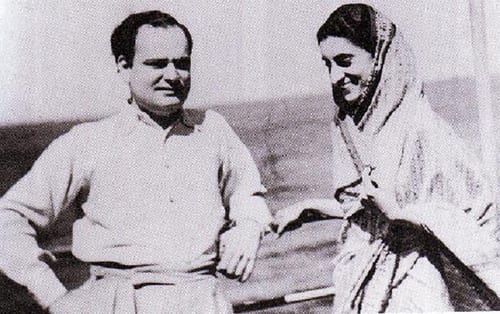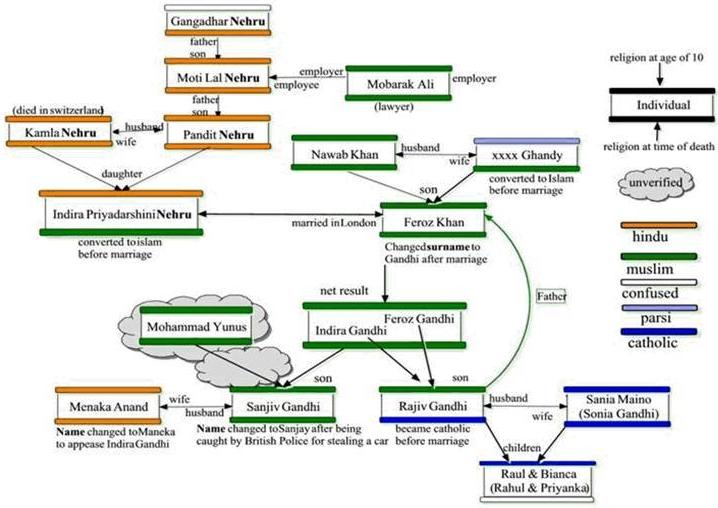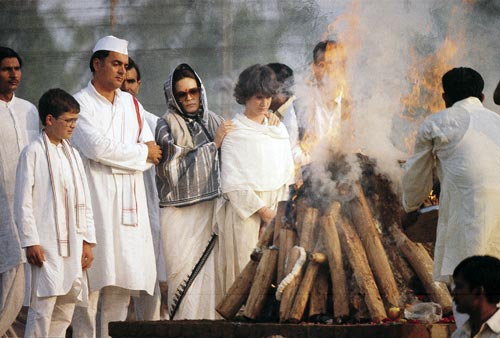PARIKRAMA
SENIOR MEMBER

- Joined
- Jan 5, 2014
- Messages
- 4,871
- Reaction score
- 185
- Country
- Location
The Indian Economy 1947 - Present Day, 2016 ---------- Part 2
+++
Prelude
I had posted a thread named The Indian Economy 1947 - Present Day, 2016 ---------- Part 1 on dated 03.03.2016
Link: The Indian Economy 1947 - Present Day, 2016 ---------- Part 1
As usual first a thanks to all members who have appreciated the work and encouraged me with feedback. Especially to @WAJsal who had been the original inspiration.
And @AUSTERLITZ who had pointed few important pointers which I hope to incorporate and cover in this part.
A special thanks to all the people who had commented and rated me thanks and positive ratings.. Your love, appreciation and encouragement always inspires me to rise up and meet your level of expectations. I do hope to do justice to the faith and confidence you all readers have put on me..
In case of errors, please feel free to correct me.. and guide me to including correct perspective things ... also if i offend anyone, pls forgive me...
Lets Start
+++
Basic Theme
We have seen so far that India post gaining independence saw first PM Jawaharlal Nehru influence the shaping of economy of our nation. Post his death, the situation changed and many new challenges, obstacles, obsessions and politics was played which changed the shape of our national economy further.
It would not be very surprising to note that this period also saw the perhaps most chaotic times post independence. Yet it has left a very deep impact in the history books of yesteryear's.
As usual, the plan is to cover this period by the way of Five year plans and the timeline coinciding with Indian Prime Minister of that era Mrs Indira Gandhi. This part 2 will be filled with politics, controversies and economic side of this era.
+++
Indira Gandhi
Small brief
Early Life

Nehru family, standing (L to R) Jawaharlal Nehru, Vijaya Lakshmi Pandit, Krishna Hutheesing, Indira Gandhi and Ranjit Pandit; Seated: Swaroop, Motilal Nehru and Kamala Nehru (circa 1927)
Indira had spent part of her childhood in Allahabad, where the Nehrus had their family residence, and part in Switzerland, where her mother Mrs Kamla Nehru was recovering from her periodic illnesses.

A Childhood picture of Indira Gandhi
She received her college education at Somerville College, Oxford. She was known for two chief features namely
A famous photograph from her childhood shows her sitting by the bedside of Mahatma Gandhi, as he recovered from one of his fasts; and though she was not actively involved in the freedom struggle, she came to know the entire Indian political leadership.

Young Indira Gandhi with Mahatma Gandhi
After India's attainment of independence, and the ascendancy of Jawaharlal Nehru, now a widower, to the office of the Prime Minister, Indira Gandhi managed the official residence of her father, and accompanied him on his numerous foreign trips.
She had been married in 1942 to Feroze Gandhi, who rose to some eminence as a parliamentarian and politician of integrity but found himself disliked by his more famous father-in-law, but Feroze died in 1960 before he could consolidate his own political forces.

Feroze and Indira met during the independence struggle and they married in March 1942 according to Hindu rituals.

Indira Gandhi with her Husband Feroze Gandhi.
Early Life undocumented controversy
As a young woman, Indira was admitted to Oxford University but driven out for non-performance. She was then admitted to Shantiniketan University, but Guru Dev Rabindranath Tagore chased her out for bad conduct as well.
After being driven out of Shantiniketan, Indira became lonely as her father was busy with politics and her mother was dying of illness in Switzerland. Playing with her loneliness, Feroze Khan, the son of a grocer named Nawab Khan who supplied wines to Motilal Nehru’s household in Allahabad, was able to draw close to her.
The then Governor of Maharashtra, Dr. Shriprakash, warned Nehru that Indira was having an illicit relation with Feroze Khan. Feroze Khan had gone to England and he was quite sympathetic to Indira. Soon enough she changed her religion, became a Muslim woman and married Feroze Khan in a London mosque. Indira Priyadarshini Nehru changed her name to Maimuna Begum. Her mother Kamala Nehru was totally against that marriage. Nehru was not happy either as converting to Islam jeopardized her political prospects of eventually becoming Prime Minister.

Maimuna Begum (Indira Gandhi) with her husband Feroze Khan
Nehru asked the young man Feroze Khan to change his surname from Khan to Gandhi. It had nothing to do with a change of religion from Islam to Hinduism. It was just a case of a change of name by an affidavit. And so Feroze Khan became Feroze Gandhi. Both changed their names to change the perception of the public of India. When they returned to India, a mock vedic marriage was instituted for public consumption.(pictures above) Thus, Indira and her descendants got the famous name of Gandhi. Both of her names, Nehru and Gandhi, are famous names.
Another story, according to Mr. Arvind Lavakare is that Feroz had a Parsi father whose surname was "GHANDI" not "GANDHI". That was made clear by an advertisement in a major English newspaper of Allahabad. It was Mahatma Gandhi who suggested to Nehru that Feroze's surname be spelt as "GANDHI" instead of the original "GHANDI". An old columnist wrote that "Ghandi's" mother was originally a parsi who converted into Muslim, and since an offspring takes on the religion of its mother, Feroz ought to be considered a Muslim.
Whatever be the case, Indira Nehru married Feroze (Khan) Gandhi in 1942 and became Indira Gandhi, which helped her politically as daughter of Nehru (the first Prime Minister of the Indian Union) and daughter–in-law of Gandhi (the father of the nation) securing her place in the future Nehru-Gandhi dynasty.
This picture below depicts the true nature of this controversy as it depicts the family ancestral chart of Nehru-Gandhi family.

It was said that Indira Gandhi's marriage with Feroze Gandhi soured over his infidelities. Feroze flirted with Indira's cousins, had an affair with Tarakeshwari Sinha, Mehmuna Sultana, Subhadra Joshi and others. She temporarily broke with him but as often happens, she forgave her husband. It is a known fact that after Rajiv’s birth, Indira Gandhi and Feroze Gandhi lived separately, but they were not divorced.
The book “The Nehru Dynasty” (ISBN 10:8186092005) by K. N. Rao states that the second son of Indira (or Mrs. Feroze Khan) known as Sanjay Gandhi was not the son of Feroze Gandhi. He was the son of another Muslim gentleman named Mohammad Yunus.
The book “The Life of Indira Nehru Gandhi” (ISBN: 9780007259304) by Katherine Frank sheds light on some of Indira Gandhi’s other love affairs. It is written that Indira’s first love was with her German teacher at Shantiniketan. Later she had affair with M. O. Mathai (father’s secretary), then Dhirendra Brahmachari (her yoga teacher) and at last with Dinesh Singh (Foreign Minister).
Former Foreign Minister K Natwar Singh made an interesting revelation about Indira Gandhi’s affinity to the Mughals in his book “Profile and Letters” (ISBN: 8129102358). It states that- In 1968 Indira Gandhi as the Prime Minister of India went on an official visit to Afghanistan. Natwar Singh accompanied her as an IFS officer in duty. Indira Gandhi visit Babur’s burial place and told Singh “Today we have had our brush with history.” Worth to mention that Babur was the founder of Mughal rule in India, from which the Nehru-Gandhi dynasty have descended.
+++
Next part i will cover the political life, the rise of Indira to become the Prime Minister of India and the economic policies and performance thereafter...
Stay Tuned.....
+++
Prelude
I had posted a thread named The Indian Economy 1947 - Present Day, 2016 ---------- Part 1 on dated 03.03.2016
Link: The Indian Economy 1947 - Present Day, 2016 ---------- Part 1
As usual first a thanks to all members who have appreciated the work and encouraged me with feedback. Especially to @WAJsal who had been the original inspiration.
And @AUSTERLITZ who had pointed few important pointers which I hope to incorporate and cover in this part.
A special thanks to all the people who had commented and rated me thanks and positive ratings.. Your love, appreciation and encouragement always inspires me to rise up and meet your level of expectations. I do hope to do justice to the faith and confidence you all readers have put on me..
In case of errors, please feel free to correct me.. and guide me to including correct perspective things ... also if i offend anyone, pls forgive me...
Lets Start
+++
Basic Theme
We have seen so far that India post gaining independence saw first PM Jawaharlal Nehru influence the shaping of economy of our nation. Post his death, the situation changed and many new challenges, obstacles, obsessions and politics was played which changed the shape of our national economy further.
It would not be very surprising to note that this period also saw the perhaps most chaotic times post independence. Yet it has left a very deep impact in the history books of yesteryear's.
As usual, the plan is to cover this period by the way of Five year plans and the timeline coinciding with Indian Prime Minister of that era Mrs Indira Gandhi. This part 2 will be filled with politics, controversies and economic side of this era.
+++
Indira Gandhi
Small brief
- Indira Priyadarshini Nehru was born on November 19, 1917, in Allahabad, India.
- She was born into the politically prominent Nehru family.
- Her father, Jawaharlal Nehru, served as India’s first prime minister.
- Through her marriage with Feroze Gandhi (no relations with Mahatma Gandhi), she adopted the surname Gandhi and was now known as Indira Gandhi
- Gandhi served three consecutive terms as prime minister, between 1966 and 1977, and another term beginning in 1980.
- In 31.10.1984, Indira Gandhi was assassinated by her Sikh bodyguards.
Early Life
Nehru family, standing (L to R) Jawaharlal Nehru, Vijaya Lakshmi Pandit, Krishna Hutheesing, Indira Gandhi and Ranjit Pandit; Seated: Swaroop, Motilal Nehru and Kamala Nehru (circa 1927)
Indira had spent part of her childhood in Allahabad, where the Nehrus had their family residence, and part in Switzerland, where her mother Mrs Kamla Nehru was recovering from her periodic illnesses.

A Childhood picture of Indira Gandhi
She received her college education at Somerville College, Oxford. She was known for two chief features namely
- Exceptional Intelligence
- Exceptional Stubbornness
A famous photograph from her childhood shows her sitting by the bedside of Mahatma Gandhi, as he recovered from one of his fasts; and though she was not actively involved in the freedom struggle, she came to know the entire Indian political leadership.

Young Indira Gandhi with Mahatma Gandhi
After India's attainment of independence, and the ascendancy of Jawaharlal Nehru, now a widower, to the office of the Prime Minister, Indira Gandhi managed the official residence of her father, and accompanied him on his numerous foreign trips.
She had been married in 1942 to Feroze Gandhi, who rose to some eminence as a parliamentarian and politician of integrity but found himself disliked by his more famous father-in-law, but Feroze died in 1960 before he could consolidate his own political forces.
Feroze and Indira met during the independence struggle and they married in March 1942 according to Hindu rituals.
Indira Gandhi with her Husband Feroze Gandhi.
Early Life undocumented controversy
As a young woman, Indira was admitted to Oxford University but driven out for non-performance. She was then admitted to Shantiniketan University, but Guru Dev Rabindranath Tagore chased her out for bad conduct as well.
After being driven out of Shantiniketan, Indira became lonely as her father was busy with politics and her mother was dying of illness in Switzerland. Playing with her loneliness, Feroze Khan, the son of a grocer named Nawab Khan who supplied wines to Motilal Nehru’s household in Allahabad, was able to draw close to her.
The then Governor of Maharashtra, Dr. Shriprakash, warned Nehru that Indira was having an illicit relation with Feroze Khan. Feroze Khan had gone to England and he was quite sympathetic to Indira. Soon enough she changed her religion, became a Muslim woman and married Feroze Khan in a London mosque. Indira Priyadarshini Nehru changed her name to Maimuna Begum. Her mother Kamala Nehru was totally against that marriage. Nehru was not happy either as converting to Islam jeopardized her political prospects of eventually becoming Prime Minister.

Maimuna Begum (Indira Gandhi) with her husband Feroze Khan
Nehru asked the young man Feroze Khan to change his surname from Khan to Gandhi. It had nothing to do with a change of religion from Islam to Hinduism. It was just a case of a change of name by an affidavit. And so Feroze Khan became Feroze Gandhi. Both changed their names to change the perception of the public of India. When they returned to India, a mock vedic marriage was instituted for public consumption.(pictures above) Thus, Indira and her descendants got the famous name of Gandhi. Both of her names, Nehru and Gandhi, are famous names.
Another story, according to Mr. Arvind Lavakare is that Feroz had a Parsi father whose surname was "GHANDI" not "GANDHI". That was made clear by an advertisement in a major English newspaper of Allahabad. It was Mahatma Gandhi who suggested to Nehru that Feroze's surname be spelt as "GANDHI" instead of the original "GHANDI". An old columnist wrote that "Ghandi's" mother was originally a parsi who converted into Muslim, and since an offspring takes on the religion of its mother, Feroz ought to be considered a Muslim.
Whatever be the case, Indira Nehru married Feroze (Khan) Gandhi in 1942 and became Indira Gandhi, which helped her politically as daughter of Nehru (the first Prime Minister of the Indian Union) and daughter–in-law of Gandhi (the father of the nation) securing her place in the future Nehru-Gandhi dynasty.
This picture below depicts the true nature of this controversy as it depicts the family ancestral chart of Nehru-Gandhi family.

It was said that Indira Gandhi's marriage with Feroze Gandhi soured over his infidelities. Feroze flirted with Indira's cousins, had an affair with Tarakeshwari Sinha, Mehmuna Sultana, Subhadra Joshi and others. She temporarily broke with him but as often happens, she forgave her husband. It is a known fact that after Rajiv’s birth, Indira Gandhi and Feroze Gandhi lived separately, but they were not divorced.
The book “The Nehru Dynasty” (ISBN 10:8186092005) by K. N. Rao states that the second son of Indira (or Mrs. Feroze Khan) known as Sanjay Gandhi was not the son of Feroze Gandhi. He was the son of another Muslim gentleman named Mohammad Yunus.
The book “The Life of Indira Nehru Gandhi” (ISBN: 9780007259304) by Katherine Frank sheds light on some of Indira Gandhi’s other love affairs. It is written that Indira’s first love was with her German teacher at Shantiniketan. Later she had affair with M. O. Mathai (father’s secretary), then Dhirendra Brahmachari (her yoga teacher) and at last with Dinesh Singh (Foreign Minister).
Former Foreign Minister K Natwar Singh made an interesting revelation about Indira Gandhi’s affinity to the Mughals in his book “Profile and Letters” (ISBN: 8129102358). It states that- In 1968 Indira Gandhi as the Prime Minister of India went on an official visit to Afghanistan. Natwar Singh accompanied her as an IFS officer in duty. Indira Gandhi visit Babur’s burial place and told Singh “Today we have had our brush with history.” Worth to mention that Babur was the founder of Mughal rule in India, from which the Nehru-Gandhi dynasty have descended.
+++
Next part i will cover the political life, the rise of Indira to become the Prime Minister of India and the economic policies and performance thereafter...
Stay Tuned.....














